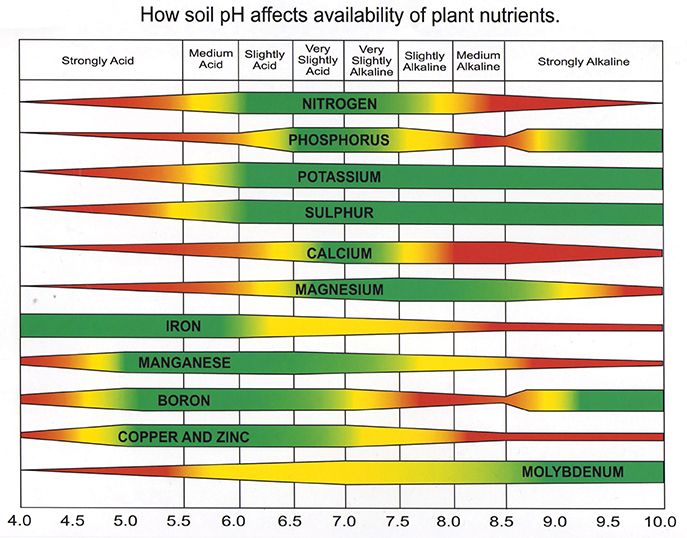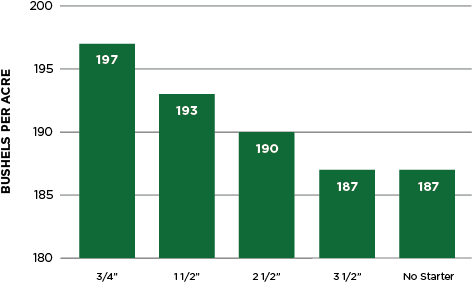Update from the Field: The Three Amigos — Zinc, Manganese, and Boron
Posted by David Dyson, Agronomist on April 03, 2018
This post may reference products and/or services only available to our Retail Farm Center customers. For more information contact your Territory Manager at The Andersons.
The three micronutrients that should be included in a starter fertilizer are zinc, manganese, and boron. Zinc is the most deficient micronutrient in the world, with boron coming in a close second. Please note, as with any nutrients that will be added to your starter, a little goes a long way. The old adage “little good, a lot better” does not apply to starter additives. Consult product labels and your local Ag Advisor on the correct rate for various nutrients being added to starters.
Continuing on, there are important biological and logistical reasons why corn starters must contain all three of these micronutrients. Let’s begin by exploring the logistics of putting these micronutrients in starters. Soil pH is an important factor influencing the availability of micronutrients. As soil pH increases, the availability of manganese, zinc, and boron decreases. As shown in figure 1, manganese, zinc, and boron become more available as the pH drops. Starter fertilizers have been traditionally acidic. Placing a concentrated band of slightly-acidic fertilizer very close to the seed will boost the availability of these very important, essential micronutrients. Logistically speaking, closer is better with an application of starter fertilizer and micronutrients. Zinc and manganese are primarily taken into the plant by diffusion, the movement of ions from a higher concentration to one of lower concentration. Boron is taken into the plant by mass flow, and nutrients move with water into the roots. Boron is not readily held by soil particles and, like nitrate, can be leached down. As shown in figure 2, Farm Journal Field Agronomist Ken Ferrie demonstrates the idea that the closer you put your starter fertilizer to the seed, the more response you will see. However, if you use a high-salt starter close to the seed or don’t follow label directions, the response can be negative.

Figure 1: Micronutrient vs. pH availability chart from Purdue University.

Figure 2: Ken Ferrie's plot experiment demonstrating closer is better.
There is also a positive biological response caused by putting micronutrients in your starter fertilizer. All three micronutrients, boron, zinc, and manganese, act as enzyme activators. Enzymes are small protein clusters that carry out a specific and necessary function in the plant. Each enzyme requires a specific micronutrient to activate it. Boron regulates the carbohydrate metabolism in plants and plays a role in amino acid formation and synthesis of proteins. Zinc helps with the formation of enzymes that are necessary for chlorophyll synthesis and carbohydrate formation. Manganese functions as an activator of enzymes that are involved in the development of oxygen in photosynthesis.
The best way to get these nutrients into your crop is with a high-quality, low-salt starter combined with 1-2 quart/acre of MicroCarb ZMB™ as close to the seed as possible. The addition of MicroCarb ZMB will provide necessary micronutrients to your starter, while carbon chelating your fertilizer and allowing these vital nutrients access to the plant. When adding MicroCarb ZMB or other alternatives to your starter, compatibility and seed safety should be at the forefront of your objectives. Always consult product labels and your local Ag Advisor on the proper use and application rates. Additionally, perform a jar test to ensure compatibility.
FOR MORE INFORMATION:
Please complete the form, and we’ll get you in touch with your Territory Manager from The Andersons.

Dave Dyson is a regional agronomist for The Andersons’ Farm Centers which are located throughout Ohio, Michigan, and Indiana. He is an Indiana native and grew up on a dairy farm in Miami County. A graduate of Purdue University with a degree in Crop & Soil Science, Dave has a deep knowledge of various agronomic topics and is committed to helping growers improve their crops. If you have any questions, Dave can be reached at david_dyson@andersonsinc.com.
MicroCarb ZMB is a trademark of The Andersons, Inc.


